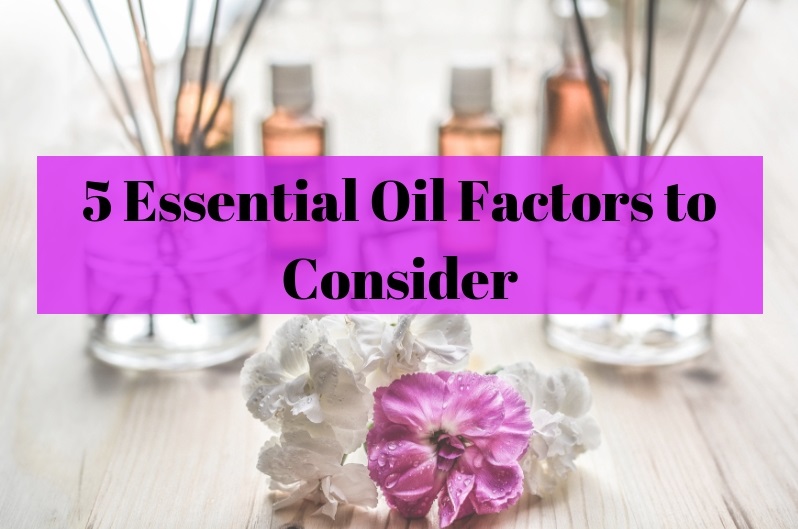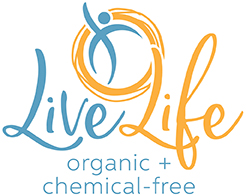
Essential oils have become popular in the last few years. Some people have reported better sleep, feeling calm, and relief from pain.
They’re used in homemade and store bought perfumes, cosmetics, and air fresheners.
They’re used in food (in small amounts).
They’re used in pesticides.
Often thought of as “safe” and “natural,” essential oils have become a “go-to” for healthier living.
It’s not that cut-and-dry, though.
Essential oils are complicated.
Their strength, chemical composition, interactions with the body, and affects on indoor air quality and health are becoming better understood. This has uncovered negative health effects.
We can use these findings to our benefit, by strategically choosing which chemical-free essential oils to use, if any.
What are Essential Oils Made of?
- Man-made chemicals.
Standard essential oils are made of a combination of synthetic and natural ingredients.
Even oils labeled “natural” can include man-made chemicals.
The U.S. Food and Drug Administration does not define “natural” or “organic” for cosmetics.
“Depending on how the essential oil is prepared, there could be toxicity from other ingredients; these preparations often contain other oils or alcohol.” -Poison Control, National Capitol Poison Center
- Highly concentrated plant extracts.
Essential oils are highly concentrated plant extracts.
While ingredients are found in nature, they’re not naturally so hyper-concentrated.
Here’s how concentrated:
220 pounds of lavender flowers = 1 pound of lavender oil
Each oil is made of a unique mix of chemicals.
The absorption, effect on body and smell are all determined by which chemicals are used.
- Inconsistent make up.
Each plant is unique.
Both the individual plant and the plant type have a unique mix of chemicals. This means no two formulas are alike.
“The chemical composition of an essential oil may vary within the same plant species, or from plant to plant.” – National Institute of Environmental Health Science
- Hundreds of chemicals.
One scent (sometimes referred to as flavor) can be made of hundreds of chemicals.
One study found most essential oils to have 100 to 250 chemical components. Some of these are natural chemicals, and some of them man-made chemicals.
400-500 chemicals were found in lavender, geranium, rosemary essential oils.
This doesn’t mean every chemical is harmful. However, it does indicate the complexity.
- Volatile Organic Compounds (VOCs).
The largest group of chemicals in essential oils are terpenes.
Terpenes are a naturally occurring volatile organic compound (VOC).
Both natural and man-made VOC chemicals can have harmful health effects such as cancer and breathing or respiratory affects.
- Secondary Organic Aerosol
Tea tree oil gives off Secondary Organic Aerosols, which is are air pollutants found to cause heart and lung problems, and other health concerns.
Also, watch out for these potential dangers.
- Misunderstood uses.
Often people think that if essential oil or other ingredient is from a plant, it’s safe. However, that’s not always the case.
For example, cumin oil is safe in food, but causes skin blisters. Therefore, it’s not safe for cosmetics or exposure to sunlight.
- Misuse can cause poisoning.
If essential oils are not used correctly, they can be poisonous.
Health Effects of Essential Oils
Some people have experienced these benefits when using essential oils: calming, reduced pain, and better sleep.
However, they may cause negative health effects as well. Here are a few of them:
- Endocrine disruptor – Some scents can imitate hormones such as estrogen, androgens (male hormone), and thyroid. These scents are known as endocrine disruptors. Endocrine disruptors can negatively impact development, reproduction, neurological systems and immune systems. Lavender and tea tree oil are two examples
- Skin rashes
- Poisonous when absorbed through skin or swallowed
- Children may be affected even more than adults. Since their skin, liver and other organs are still developing, they may be more toxic to children.
- Drug interactions (with prescription drugs, herbs, etc.)
- Cancer
- Breathing or respiratory affects
- Heart and lung problems
- Allergy triggers
- Headaches, migraines (especially for people sensitive to fragrances)
What to Look for in Essential Oils
There is no specific certification agency for essential oils. However, two third-party organizations have evaluated the organic and health effect of some essential oils.

USDA Organic Certified. Some essential oils come with the USDA Organic logo. This means they’re certified as having 95-100% natural ingredients (not man-made).
While organic essential oils can still affect health, most of the man-made chemicals are not a factor.

EWG Skin Deep. The Environmental Working Group (EWG) cosmetic database, Skin Deep, provides health ratings for some essential oils, or related products.
5 Things to Consider Before Using Essential Oils
- Certified organic. Look for essential oils that are certified organic. This means 95-100% of the ingredients as organic ingredients.
- Use according to instructions. Using essential oils incorrectly can create health concerns. Be sure to follow instructions for use.
- Correct amounts. Using too high of doses can be harmful to health. Be sure to use correct amounts, and not over use. Remember, essential oils are already super concentrated. Therefore a few drops can make a big difference.
- Consult your doctor. Before using essential oils, ask your doctor about possible drug interactions. Make sure the essential oils you’re considering are right for you.
- Weigh benefits vs. risks. Consider the benefits and risks of using essential oils before using them in cleaners, cosmetics, air fresheners or food. Decide what risks you’re willing to take or not take.
Final Thoughts
While chemical-free essential oils can be helpful in some cases, they can be harmful in others.
Keep in mind, the type of essential oil, ingredients (even natural ingredients), quantities, uses, medications, and each person’s unique body can determine if the essential is helpful or harmful.
Consult with your doctor (preferably with an Environmental Medicine or Lifestyle Medicine background), particularly about potential drug interactions.
Finally, weigh the benefits and risks before using an essential oil, even when they’re chemical-free.
Interested in learning about other types of fragrances?
Check out Organic Lifestyle Made Easy: How to create a chemical-free household one step at a time.
